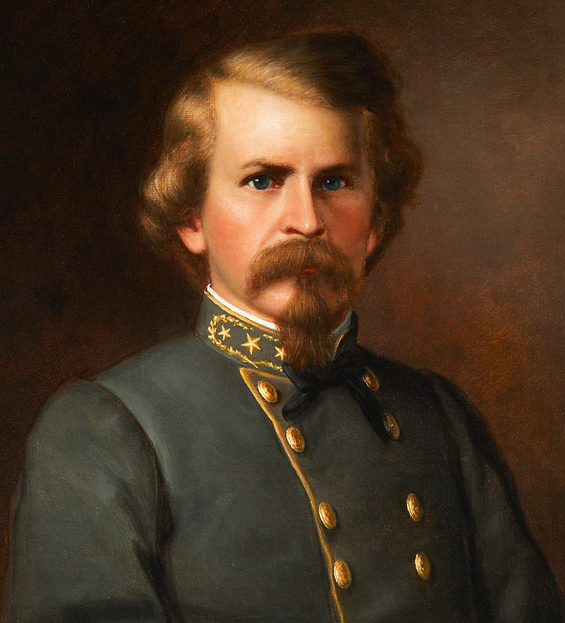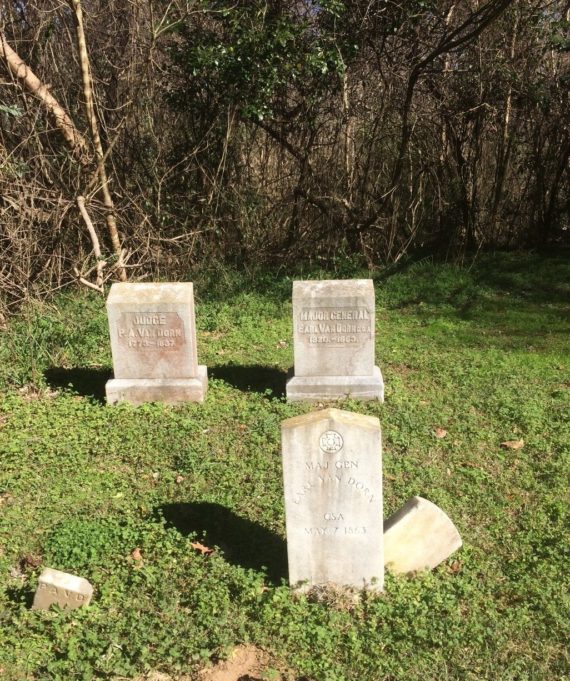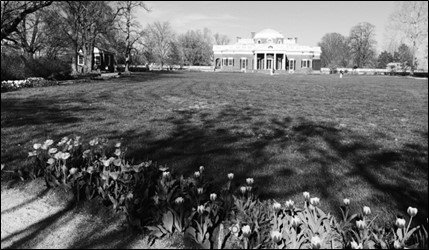In some ways, historians are like anyone else: they hate to make mistakes. But if you write enough, sooner or later, you will make a mistake—I assure you. I certainly have, but I have been more fortunate than most. Sometimes, mistakes benefit you. What I suppose are my two most significant errors to date came more than two decades apart, and both had overall positive results.
In the late 1980s, I wrote a book entitled Hitler’s Legions. In it, I accepted as fact a U.S. Army intelligence report which stated Generalleutnant Josef Folttmann was killed near Belfort Gap in November 1944. (I was just starting out as a historian in those days and the report was written by the same intelligence officers who gave us the Battle of the Bulge three weeks later, but I did not take that into consideration.) Shortly after Legions was published, Friedrich-Theodor von Stauffenberg wrote to me, corrected me, and informed me that Hans Oschmann was the general who was killed in the battle in question. When I asked him if he was sure, Stauffenberg sent me a copy of a book General Folttmann wrote in 1957—13 years after I killed him off. It listed Oschmann as killed on the date I cited.
This turned out to be perhaps the most fortunate professional mistake anyone ever made. Friedrich and I corresponded, became good friends, finally met, and even wrote a book together.[1] When he realized his last illness would be fatal, he sent me his papers, as well as three unpublished manuscripts by General der Panzertruppen Hans Eberbach.[2] I used the Eberbach manuscripts as the basis of a book and have mined the Stauffenberg Papers for more than 20 years.[3]
My latest literary faux pas also turned out to be beneficial. In Bust Hell Wide Open: The Life of Nathan Bedford Forrest, I wrote that Dr. George Peters murdered General Earl Van Dorn because he was fooling around with Peters’ wife. It turns out that this is not true. In her book Where Elephants Fought, Ms. Bridget Smith proved definitively that Peters shot Van Dorn because he was in an elicit affair with Peters’ 19-year-old daughter—at the same time he was having intimate relations with her mother![4] (Dr. Peters would have been doubly enraged had he known that his daughter was pregnant at the time.)[5]
I don’t feel too penitent about this particular mistake. Some of the giants in the field committed the same error. I won’t mention any names, but I bet are some very distinguished historians are reading this with a little egg on their faces. On the other hand, my mistake also had a benefit for me. It led me to attend one of Ms. Smith’s presentations, and I found her to be a brilliant, entertaining, and extremely well-informed public speaker.[6] She lived near Spring Hill, Tennessee, where General Van Dorn was murdered, and as a young lady heard rumors that the “official” story was not exactly accurate. It took her many years to run down the entire true account, partially because some of the surviving members of the Van Dorn family did not want the truth of the scandal uncovered. How she did it is discussed in Where Elephants Fought, and the details are impressive but would require too much space to recount here.
Looking back on it, the logic behind Ms. Smith’s conclusions concerning Dr. Peters’ motives is unassailable. The author indicates that Mrs. Peters was beautiful, promiscuous, and possibly a nymphomaniac. Had the doctor—who was much older than she—killed every man who took an amorous interest in his spouse, he would have been a mass murderer.
It is natural, I suppose, that General Van Dorn would fall into a dangerous and eventually deadly situation of this nature. The general was a youthful, handsome, and dashing cavalryman with a wandering eye. Nicknamed “the Terror of Ugly Husbands,” he already had three illegitimate children before he wore the gray. He was also fearless and often heedless of risks, sometimes to the point of rashness, both on and off the battlefield.[7]
Ms. Smith presented her research in a book entitled Where Elephants Fought: A Story of Murder and Intrigue During the Civil War. She fictionalized some of the conversations (we don’t know the exact words they used) and Mrs. Peters’ diary, in the same way Alex Haley used his ancestors’ conversations and recollections (which do not exist) in Roots. Where Elephants Fought remains focused throughout on the goal of presenting a historically accurate portrayal, much like E. Prioleau Henderson did in Autobiography of Arab or Huger William Johnstone did in his Truth of the War Conspiracy of 1861. Sergeant Henderson used the “autobiography” of his horse to present insights and an accurate portrayal of the 2nd South Carolina Cavalry and its mounts. Johnstone brings out important information concerning Lincoln’s successful effort to start a war with the Confederacy while simultaneously maneuvering the South into firing the first shot, so he and his myrmidons could blame the Confederacy for starting the conflict. Johnstone documents everything he says, but the literary device he uses is a conversation between himself and his sword.[8]
Similarly, in his novel Uncle Seth Fought the Yankees, James Ronald Kennedy used a fictitious Uncle Seth and his fictitious family to tell true stories about the war, its causes, and its consequences. Margaret Mitchell’s Gone With the Wind is one of the most important Civil War books ever written, although it can only be found in the fiction section of the library. Likewise, Smith uses the literary tool of Mrs. Peters’ fictitious diary to convey relevant information and to move the story forward in a most interesting and thought-provoking way. The point is this: historians should not dismiss valuable books out of hand just because they are novels. Historical truths should be carefully examined and culled from the fictitious literary devices employed by people like Henderson and Johnstone, Kennedy, Mitchell, and Smith. In this manner, both the reader and historian can glean a great deal about the past.
Unfortunately, the reverse is also true: certain “histories” of the war contain so much misinformation and “facts” that aren’t true that they should be on the shelf next to Roots or Gone With the Wind in the fiction section, not in the non-fiction wing of the local public library That discussion, however, is beyond the scope of this review.
Bridget Smith uses fiction as an instrument to bring her book to life, and she does so in a brilliant manner. It is not a dry recount of historical facts, but is a swiftly paced and exciting story of love, sex, infidelity, and intrigue. It is also the finest piece of forensic history I have ever read. It also carries the story beyond the murder and tells how Dr. Peters escaped, was later captured by Confederate forces, and how the murder charges against him were dismissed. She also sheds light on the cover-up of the motives for the murder and how it impacted the family for generations. Finally, Where Elephants Fought reminds us that adultery and the seduction of vulnerable young women are not good ideas, especially if the girl involved has a father who knows how to shoot.
The grave of Earl Van Dorn (right) is located in a lonely corner of the Wintergreen Cemetery, Port Gibson, Mississippi, and is not easy to find. He was originally buried in Alabama, where his wife did not attend his funeral. Neither his wife nor any other member of his own family is buried near him. The grave to his right is that of his father, Judge Van Dorn.
[1] Mitcham and Stauffenberg, The Battle of Sicily (1987).
[2] Eberbach commanded the 5th Panzer Army in Normandy, where he checked Montgomery several times.
[3] Friedrich was a cousin of Colonel Count Claus von Stauffenberg, who placed the bomb under Hitler’s table on July 20, 1944.
[4] Bridget H. Smith, Where Elephants Fought: The Murder of Confederate General Earl Van Dorn (Mechanicsburg, Pennsylvania: Sunbury Press, 2015).
[5] Despite the fact that she was Protestant, the daughter, Clara, ended up in a convent. The author traces the history of the Peters’ family almost to the present day.
[6] Bridget Smith teaches English for Holmes Community College at Madison Central High School in Madison, Mississippi.
[7] I agree with Aristotle that courage is the first virtue because it makes all other virtues possible; however, in my opinion, it is sometimes a mixed virtue. Fearlessness can get you killed.
[8] Both Autobiography of Arab and Johnstone’s Truth can be accessed online at no cost to the reader. Johnstone, however, often cited the Official Records (O.R.) Volume 4. He should have cited Richard Rush and Robert H. Woods. Official Records of the Union and Confederate Navies in the War of the Rebellion (Washington, D.C.: 1880-1891), Volume 4 (aka O.R.N.), for the most important (and historically accurate) portions of his book.







